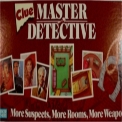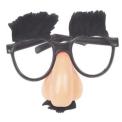Saturday, December 8: New York Minute
QUEEN’S QUORUM: THE BEST OF DETECTIVE AND MYSTERY SHORT STORIES
by Barry T. Zeman
In 1942 a year after they started publishing Ellery Queen’s Mystery Magazine (EQMM), the two cousins from Brooklyn writing under this famous pseudonym produced a most unusual book, The Detective Short Story: A Bibliography. This limited edition volume was self-described as the “first bibliography of the detective short story ever written … the only work of its kind.” Following on the heels of Howard Haycraft’s breakthrough critical work Murder for Pleasure, this work was Queen’s first foray into the field of the history and criticism of detective fiction they would become known for. For this volume Queen selected all the books of “pure” detective story stories, with some exceptions, from the ancient “detectival” stories of Daniel in the Bible, to the latest anthology appearing in 1940. The exceptions being what Queen termed “crook” stories, as well as mystery, crime, and secret service tales in which there is “either a strong thread of deductive investigation or an equally authentic detectival strain”.
From The Detective Short Story, it was nearly a decade before the next logical progression in Queen’s bibliophilic scholarship came about. In 1948 Queen’s Quorum appeared for the first time in an addendum to the Queen’s anthology Twentieth Century Detective Stories. This initial list of what they considered the 100 most important books in the history of the short story. In 1951his article grew into a full-blown book; Queen’s Quorum, which they called “a short history of the detective-crime-mystery short story as revealed through the 106 most important books published in this field since 1845.” Included was their personal evaluation of every book selected based on three factors they determined established each “as an authentic cornerstone”: 1) the book’s historical importance; 2) its literary quality; and 3) its desirability as a collector’s item.
Each year or so through 1969, Queen published in EQMM carefully and thoughtfully selected additions to the list from the crop of short story collections published at the prior few years, finally ending with 125 entries of best and most significant short story collections from 1845 through 1967.
Queen starts by tracing the pre-modern or incunabular period from the Bible through Voltaire, continuing through Leggett, Hawthorne and Vidocq, up to the first entry on the list, Edgar Allan Poe’s Tales. They then discuss The First Fifty years revealing 14 early examples until the next chapter, “The Doyle Decade” which starts in 1892 with Israel Zangwill’s The Big Bow Mystery adding 14 more volumes until they get to the “First Golden Era”, beginning in 1901 with In The Fog by Richard Harding Davis, bringing the total to 46 by the end of 1910. Queen then continues marching chapters decade by decade. Entries from No.47, The Innocence of Father Brown by G.K. Chesterton, to 68 encompass the ”Second Golden Era”, The First Moderns start with Maurice Leblanc’s The Eight Strokes of the Clock, and end with Frederick Irving Anderson’s Book of Murder in 1930 at no. 82.
The Second Moderns chapter start’s with F. Tennyson Jesse extending “the old concepts of formula” by creating in The Solange Stories a woman detective “gifted by nature with an extra sense that warned her of evil” and ends in 1940 at no. 95 with William McHarg’s The Affairs of O’Malley, “tough, terse and muscular” tales about the smartest “dumb” cop around, and representing “as close an approach to true realism as is possible in the genre”.
Rounding out the original Queen’s Quorum 1952 volume is the chapter “The Renaissance” beginning with Number 96, Six Problems for Don Isidro Parodi (1942), a very important book by H. Bustos Domecq (joint pseudonym of Jorge Luis Borges and Adolfo Boiy Casares), and ends with 106, Lawrence Blochman’s Diagnosis: Homicide. The remaining 19 were added in 1969 and appeared as a tenth chapter titled “Renaissance and Moderns” in the reprint addition of Queen’s Quorum published by the Biblo and Tannen, one of the last of the well known “Fourth Avenue Bookshops” of New York City.
Next time we delve deeper into each decade, exploring some of Queen’s insights and recommending some of the lesser know collections worth finding for you reading enjoyment.



















